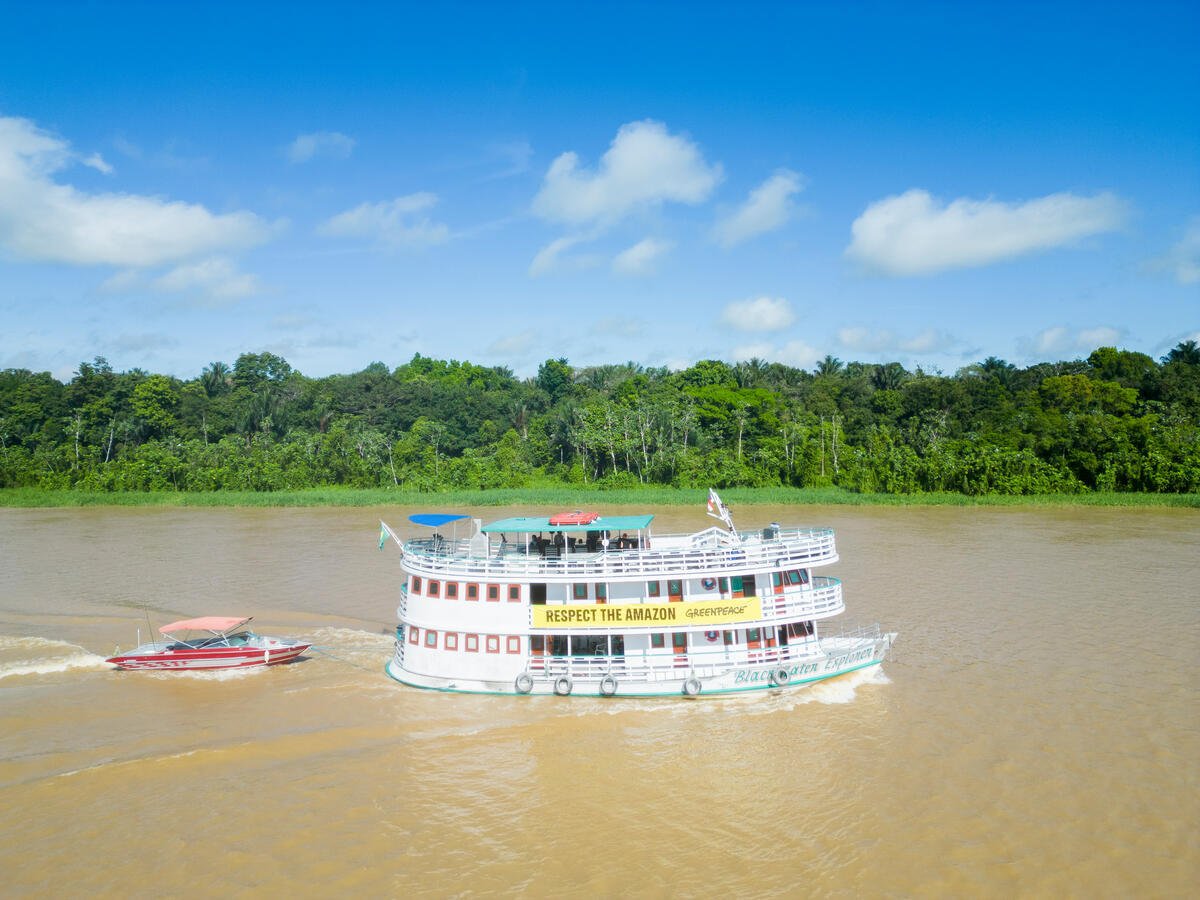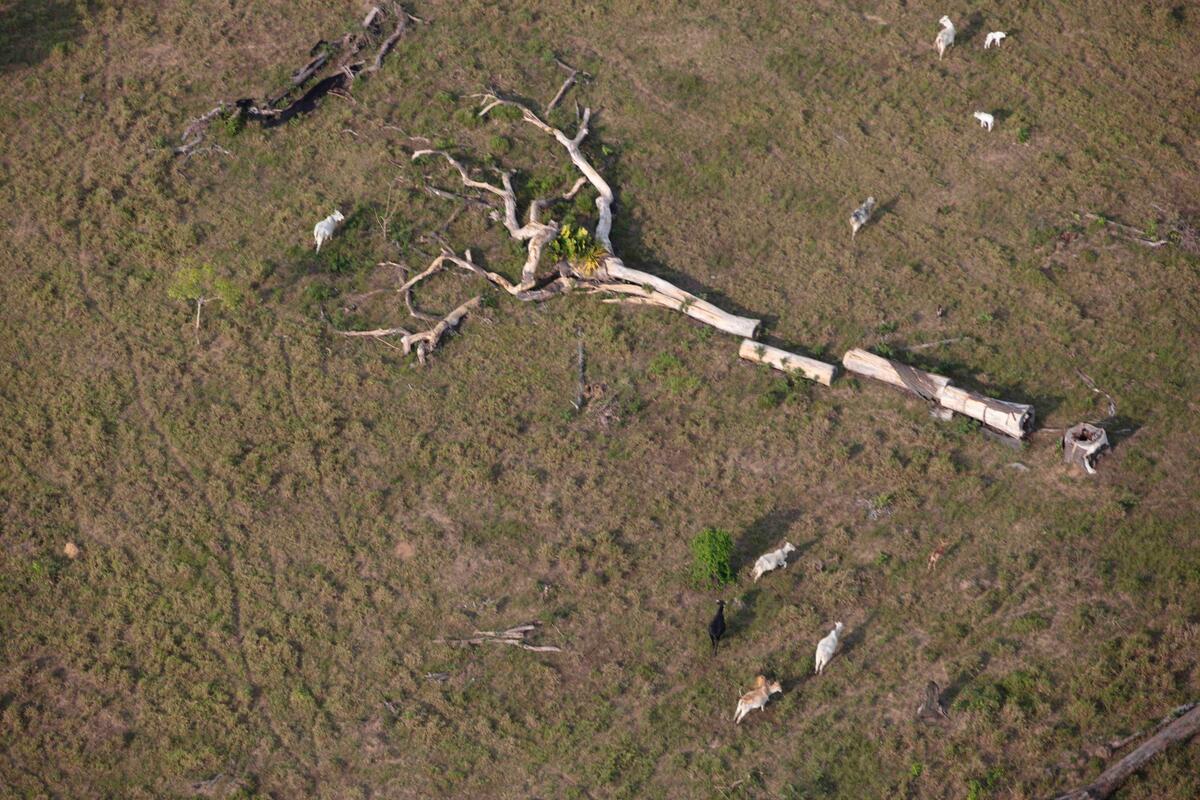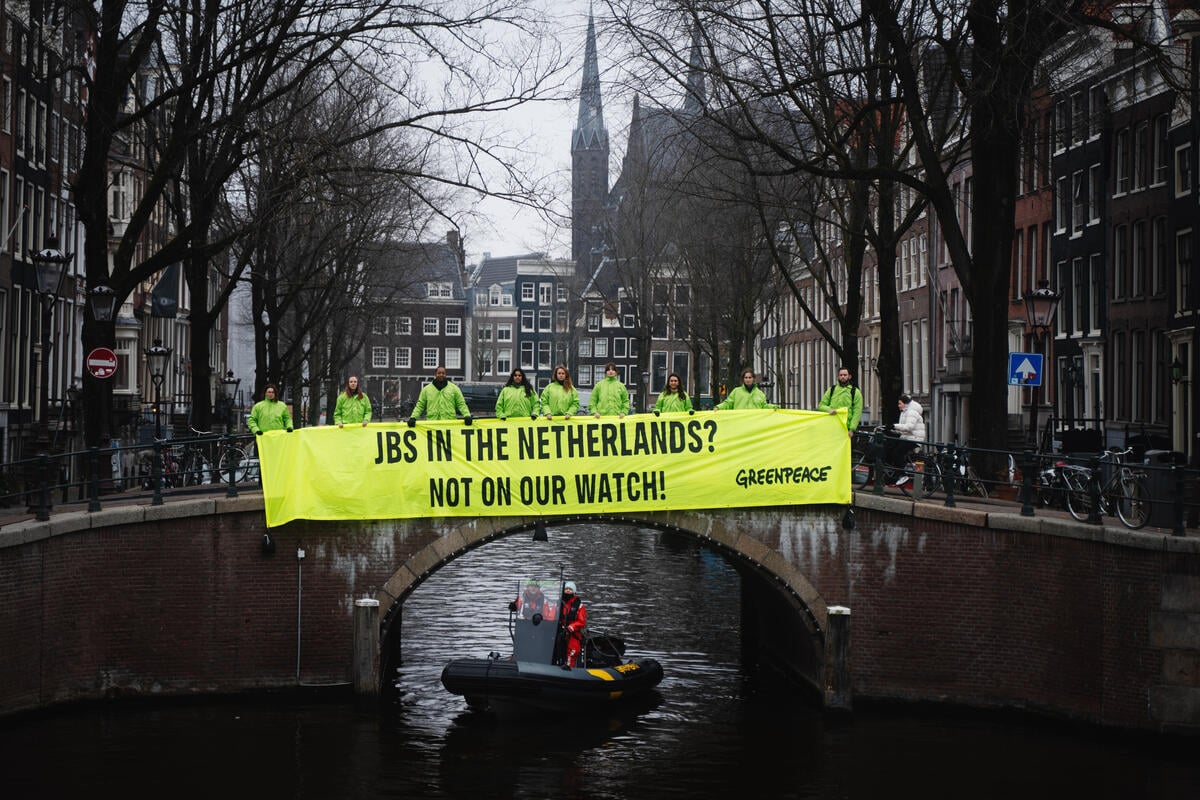Boa Vista, Brazil – Images from a flyover reveal a 150-kilometre-long illegal road within the Yanomami Indigenous Territory connecting several areas where illegal mining occurs, passing less than 15km from the village of the voluntarily isolated People Moxihatëtëma. The proximity of the road to their village increases the risk of encounters and conflicts with miners and exposure to new diseases.
Images of the road and illegal mining pits are available in the Greenpeace Media Library.
“It is unbelievable that so many kilometres of road are illegally opened inside an Indigenous land, under the eyes of the State, which simply ignores the construction. This road is a real threat to the lives of the Indigenous people who live there, as it impacts the culture, food and freedom of the Indigenous people within that territory, and makes the transmission of diseases easier. The environmental impact is also huge”, said the executive coordinator of the Articulation of Indigenous Peoples of Brazil (APIB) and lawmaker-elect, Sônia Guajajara.
As the region is difficult to access, illegal mining in the Yanomami Indigenous land is highly dependent on air routes, which depends on high operating costs and on small aircraft to transport basic equipment. The opening of the illegal road would significantly increase illegal mining activities in the Yanomami Indigenous land, since it would make it possible to transport materials and heavy machinery to the territory by land, reducing the logistical costs of the activity.
A similar situation has already occurred in the lands of the Munduruku and Kayapó Peoples, the two territories in Brazil most affected by the effects of illegal mining on Indigenous lands. In these areas, there was an explosive increase in the size of the degraded area and an exponential increase in operation. Access to equipment such as bulldozers and tractors allows illegal miners not only to expand their operations, but also to build greater infrastructure for their activities, making it even more difficult to fight the illegal practice.
“The discovery of the road and the arrival of this equipment in such a sensitive region is a very worrying sign. These machines increase the impact and scope of mining exploration by ten to fifteen times, expanding exploration to inaccessible places at brutal speed. With these resources, it is a matter of time – and not very long – for mining to reach the area where the isolated peoples live. The authorities need to urgently work on the removal of the miners from the Yanomami Indigenous land, which is under the risk of suffering irreversible socio-environmental damage”, said Danicley de Aguiar, Greenpeace Brazil’s spokesperson for the Amazon campaign.
ENDS
Contacts:
Diego Gonzaga, Communications Specialist for Greenpeace International, [email protected], +1 415 527 9440
Greenpeace International Press Desk, [email protected], +31 20 718 2470 (24 hours)



